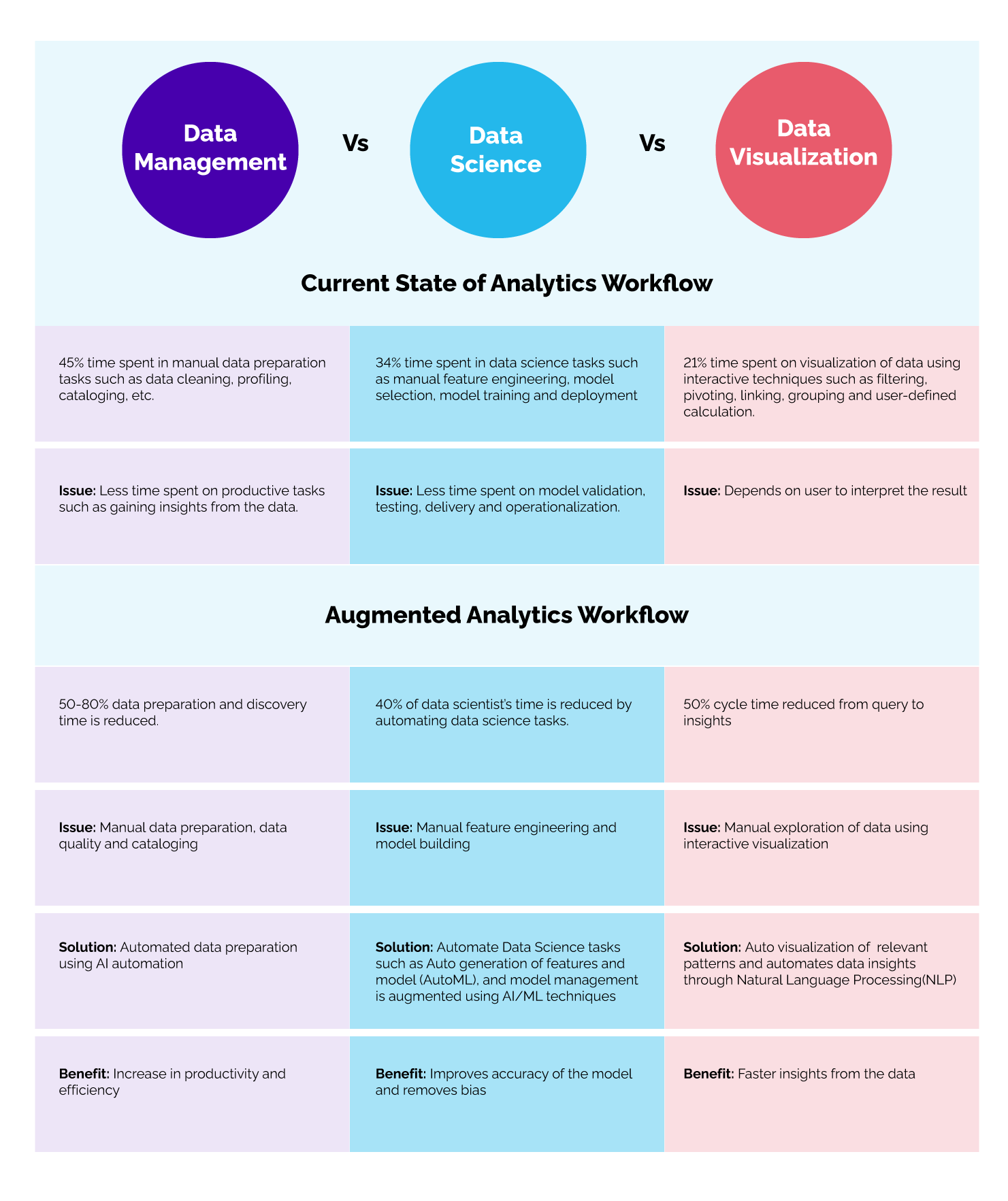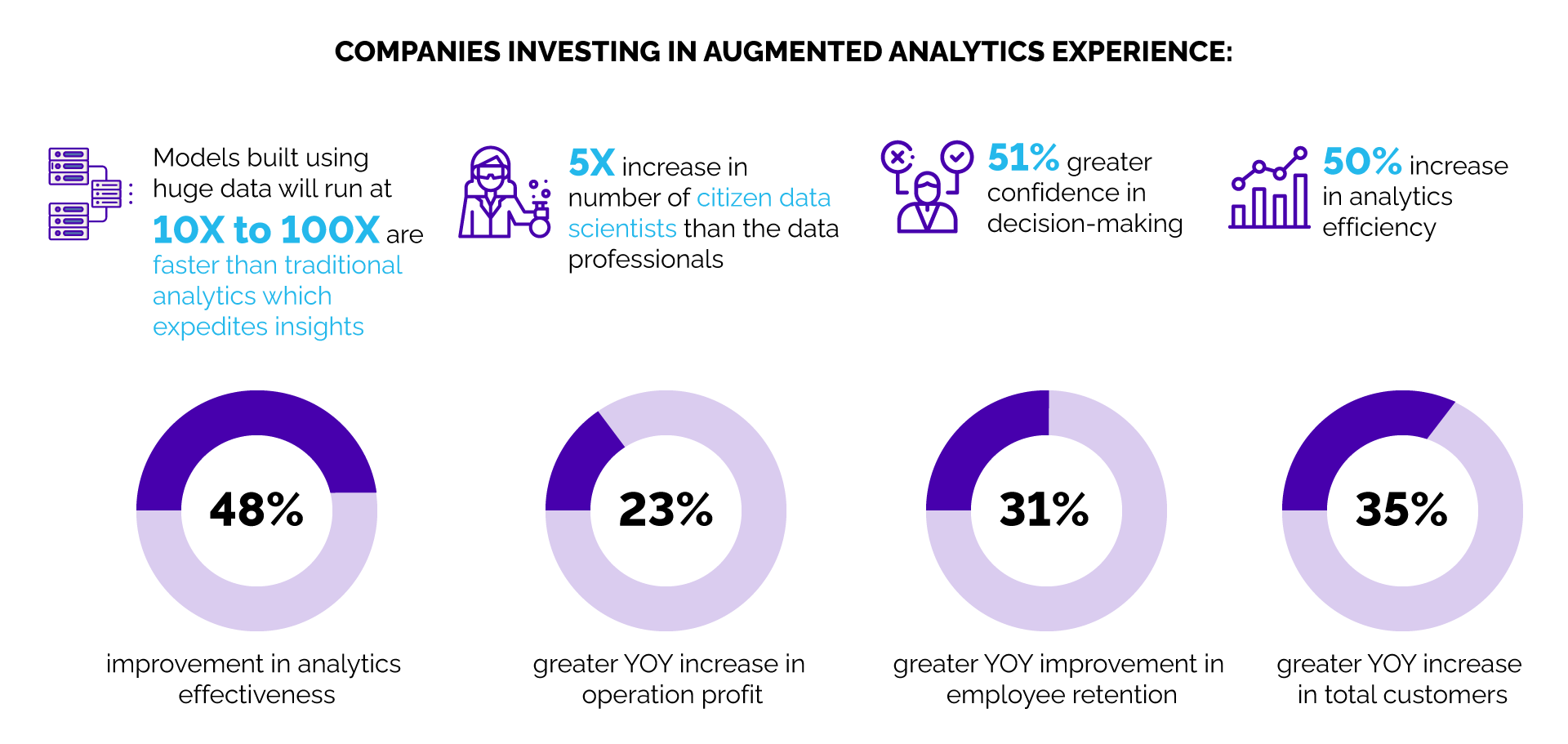Augmented Analytics: The future of data analytics
One of the latest data and analytics trends which has gained considerable traction these days is Augmented Analytics. The term was coined by Gartner in 2017, goes well beyond the world of data and analytics, bringing in the wave of disruption in the market. By leveraging AI/ML techniques, it transforms how analytics content is developed, consumed, and shared.
There are compelling reasons why organizations must adopt augmented analytics technology. Many organizations have realized the importance of Big Data and its role in decision making across the business. However, this sheer volume of data available to organizations is making effective interpretation a real challenge. According to Forrester Research, less than 0.5% of all data is ever analyzed and used. While a mere 12% of enterprise data is used to make decisions. This will only make it worse with the growth in IoT connected devices which is expected to generate 79.4 Zeta Bytes (ZB) of data across 41.6 billion devices, according to IDC Forecast.
To date, many processes remain largely manual and prone to bias across the data value chain. This includes managing and preparing the data for analysis, building ML/AI models, interpreting the results, and making insights actionable.
Using the current analytics approach, business users find their own patterns, and data scientists build and manage their own models. This results in exploring their own hypotheses, missing key findings, and interpreting incorrect conclusions. This will adversely affect decisions, actions, and outcomes. According to Forrester Research, only 29% of organizations are successful at connecting analytics to action.
Augmented Analytics promises to ease this bottleneck. It democratizes AI across the data value chain. It automates the data preparation process, key aspects of data science, and ML/AI modeling using ML (AutoML) techniques and narrate relevant insights using NLP and conversational analytics. It includes:
- Augmented data preparation uses AI/ML automation to accelerate manual data preparation tasks like data profiling and quality, enrichment, metadata development, and data cataloging, and various aspects of data management like data integration and database administration.
- Augmented data science and machine learning uses AI/ML techniques to automate key aspects of data science such as feature engineering and model selection (AutoML), as well as model operationalization, model explanation, and model tuning.
- Augmented analytics as a part of BI platforms embed AI/ML techniques to automatically find, visualize the data and narrate the relevant findings via conversational interfaces, including natural language query (NLQ) technologies, supported by natural language generation (NLG).
This leads to an increase in productivity, efficiency, and smart decision-making across the organization. One of the greatest benefits of augmented analytics is that it democratizes data analytics for less business-savvy users i.e., Citizen Data Scientists without any specialized training or skills in data science or analysis. Augmented Analytics also enables the adoption of actionable insights for the executive team across the organization.
So, every organization will need an augmented analytics platform to connect disparate and live data sources, find relationships within the data, create visualizations, and help human users effortlessly share their findings across the entire organization. It will change how users experience analytics and BI and the world by serving up insights that humans could ever imagine.
Did your organization adopt Augmented Analytics? If yes, how it has benefited the organization? Feel free to share your thoughts and some interesting statistics about augmented analytics in the comments section.
Learn how augmented analytics can help transform your approach to enterprise AI





